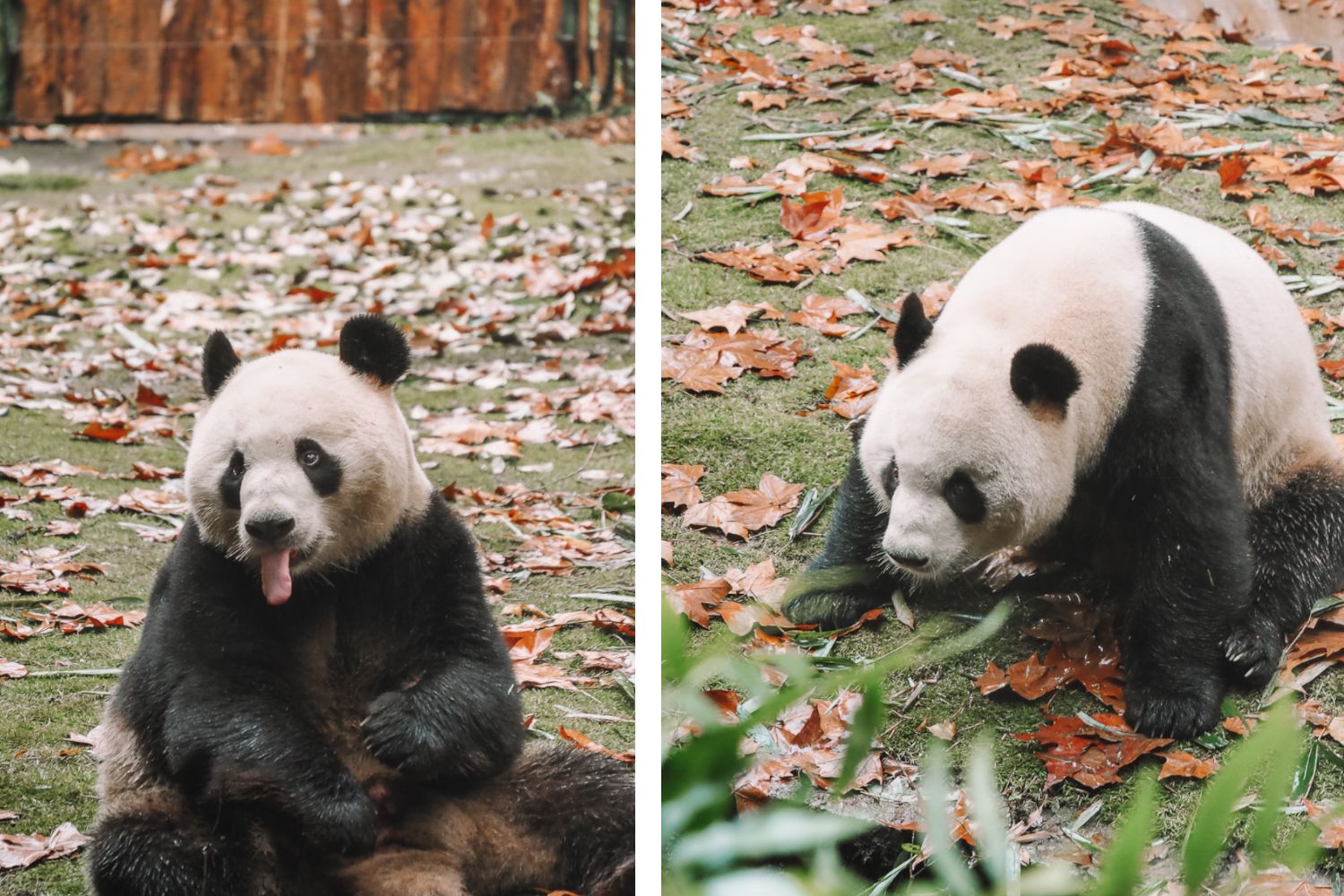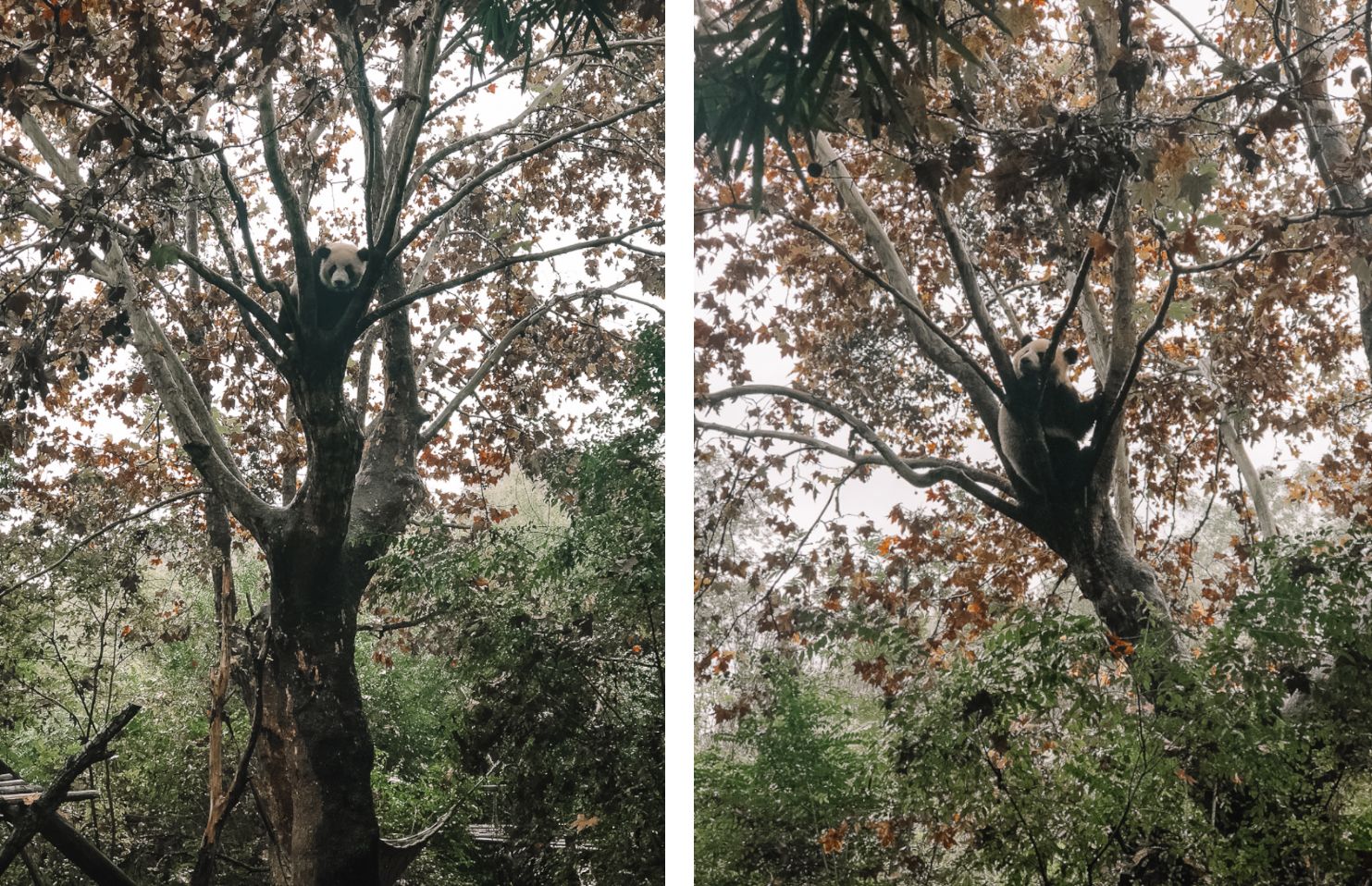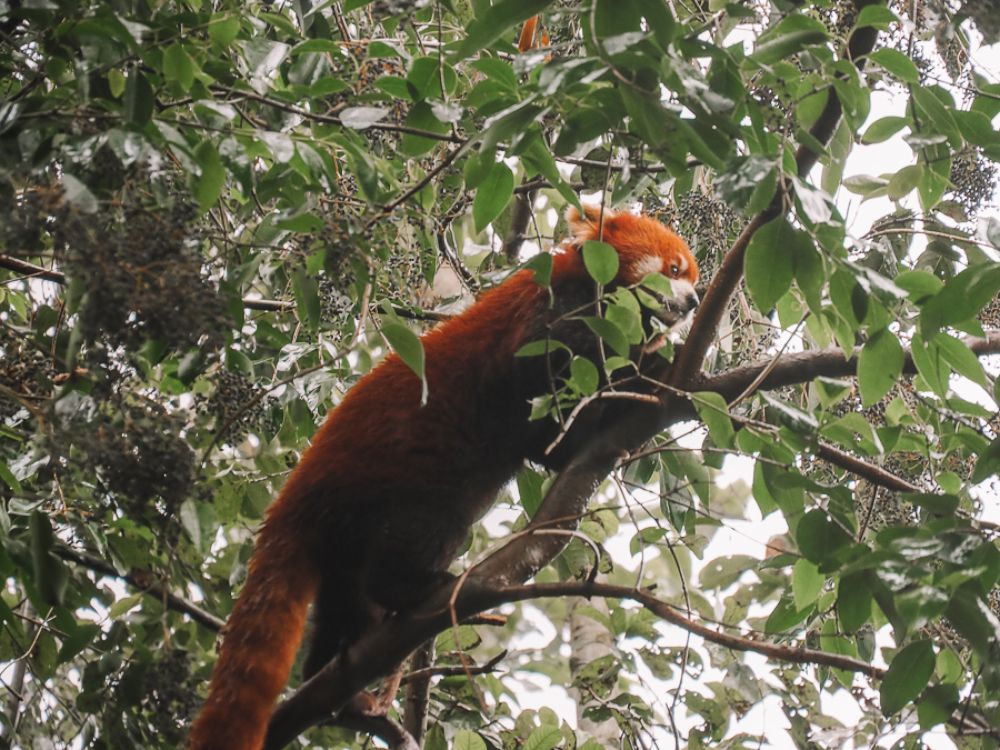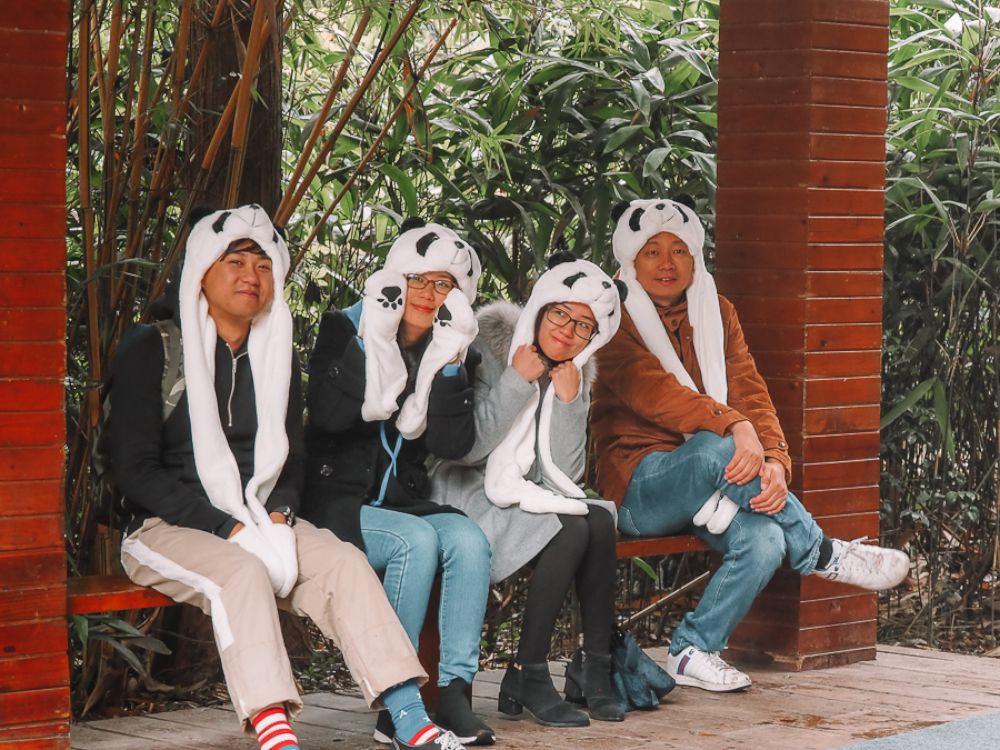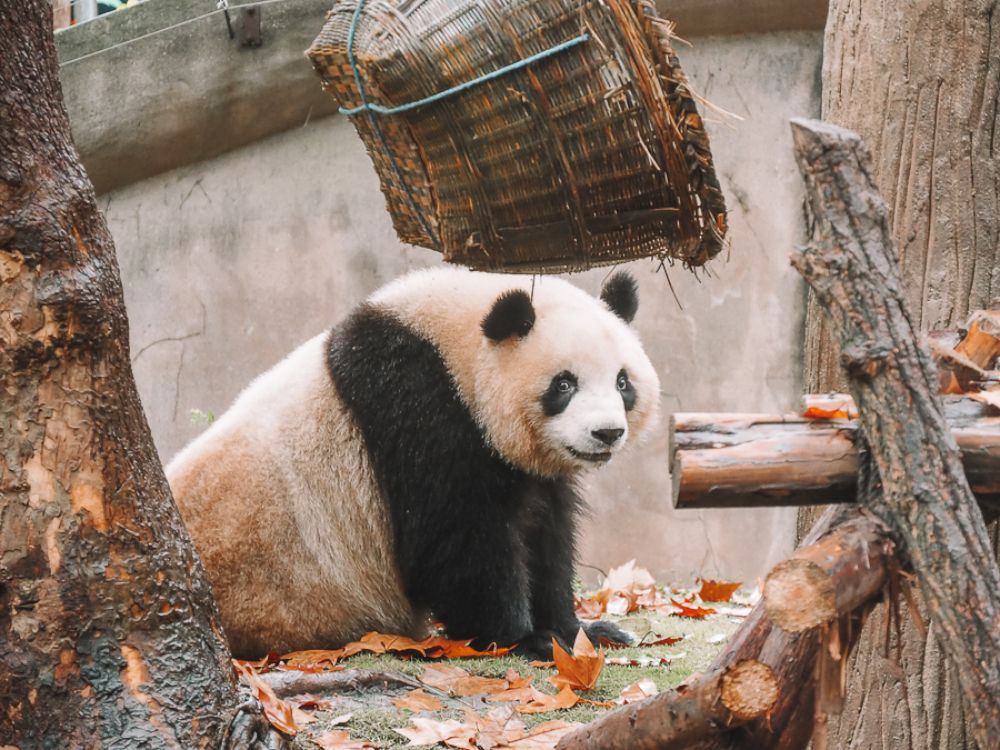
When you think of Chine, we inevitably think of the country’s emblem, the panda. That’s why I wanted to share my feelings with you on whether or not you should go and meet it in Sichuan. A look back at my experiences in 2015 and 2018.
Before coming to China, I thought I’d meet the panda in its natural environment, hiking through immense bamboo forests at 3100 meters deep in the country. But the reality is quite different. What do you need to know about this species, one of the rarest and most endangered in the world?
First and foremost, it’s important to understand that seeing pandas in their natural environment (even if it were possible) would be totally detrimental to the species. Panda reproduction is very fragile (in captivity or in the wild), and a female is only fertile for 48 hours between February 15 and March 30! What’s more, the male panda is not a bonobo, and his motivation to mate is very low. Having tourists around would only minimize the chances of reproduction. So, if you want to be ethical, it’s best not to go and see them in their natural environment. It’s not meant to be around humans.
The only way to see it is in a center. And there are 4 places in the Sichuan, to observe the panda:
– The Chengdu (about 50 pandas)
– The nature reserve of Wolong 130km from Chengdu, a 2.5-hour drive each way (around 30 pandas). It is regarded as the real home of wild pandas.
– Bifengxia (about 20 pandas). Volunteer center to take care of pandas for 2 days, in a quieter environment. More expensive and more difficult.
– Dujiangyan for the Giant Panda volunteer program (around 20 pandas), 67km from Chengdu (1h30 drive). Only 60 people per day, are allowed to take part in this unique experience. The center is smaller, quieter and welcomes fewer travelers than the Bifengxia Panda Center. In this way, volunteers can spend more time with the pandas.
The Chengdu et de Bifengxia are the two biggest in China, but Chengdu is the easiest to get to, and is ideal for tourists with limited time.
Today, the natural habitat of giant pandas is in the Min Mountains of Sichuan with the Wanglang nature reserve, in Gansu province, and in the Qinling Mountains in Shaanxi Province with the Foping nature reserve.
WHICH CENTER TO CHOOSE FOR PANDA WATCHING?
Wolong was destroyed by an earthquake in 2000. The surviving pandas were transferred to the Bifengxia, time to rebuild the site. By July 2015, both centers were open to the public.
When you travel to China, you quickly understand the meaning of distance! This country is huge, and getting from one place to another takes a lot of time. Consequently, your choices are determined by your desires, your fatigue, the distance and your route. For our part in 2015, we would have liked to do the Wolong or Bifenxia centers as they seemed less touristy than the one in Chengdu. Because of their remote location, and the fact that they’re on the opposite side of the city from Chengdu, we took the easy way out, we have to admit! We didn’t really know what to expect…
Today, there are less than 2000 pandas worldwide (including zoos and reserves) and very few free-ranging or forest-reintroduced pandas. Humans have often hunted them to display them as hunting trophies and for their skins, but they have also destroyed their environment and habitat to build buildings and other real estate projects! As a result, the government had to take action to save and preserve this endangered species. He decided to open the Chengdu research and breeding center. Since it opened in 1987, the center has seen the birth of 92 pandas. The park is first and foremost a research and artificial reproduction center for panda conservation and, from time to time, natural reproduction, when the alchemy is right between pandas. So far, the initiative is very good, and I’d like to say, thank goodness this place exists to conserve the species. But where I’m puzzled is how the center is made. At first glance, it’s not unpleasant to stroll among the bamboo, but as soon as you enter, you get the feeling that this park lacks authenticity.
HOW TO GET TO THE PANDA BREEDING CENTER?
Location: on the outskirts of Chengdu, 40 minutes by car, easily accessible.
Input for the center: 30 RMB/p
WHY ARE WE SO DISAPPOINTED AND MIXED?
Chengdu is a fairly touristy city and consequently visited by many European and Chinese tourists who come here to visit Tibet and see the giant pandas. And when the Chinese travel, they are just numerous and very noisy!
The Chengdu Research Center is a huge park that takes 1/2 a day to visit and gives you the chance to photograph both the giant panda and the lesser-known but equally cute red panda. Inside, you can travel either by train or on foot. You can watch films on panda breeding and protection. As you go deeper into the park, you’ll notice the many paths leading to different enclosures. Bamboo branches are stacked here and there on wooden walkways, so that we can get a good look at them. There are also games created with car wheels and swings to keep them entertained. You should also know that the mother panda only cares for one baby at a time, and in the case of twins, she abandons one. Some of the park’s animals are young pandas abandoned by their mothers.
What are the changes between 2015 and 2018?
At the time, we were advised to arrive early to minimize the number of tourists, but also to be sure of seeing the giant panda, which is quite an early bird. He performed his ritual at very specific times, and it would have been a shame to miss it! If you arrived around 11 a.m., you were very likely to come across a sleeping panda, or empty enclosures as they hid away to digest and rest. At midday, we returned to the enclosures, but unfortunately the pandas were no longer there! In July 2015, there were births. We were lucky enough to be able to admire a baby panda, just a few weeks old, behind a bay window and in an incubator. (Baby pandas are born blind, but they’re so cute with their white coats and pink eyes). It was the star attraction for tourists. There was at least a 20-minute wait and a lot of jostling for a few seconds of happiness.
In november 2018, we visited the center in the early afternoon in light rain. Big change: it has become a very touristy attraction made for Chinese tourists, with more and more stores in all 4 corners and visitors looking for thrills. We’re here to see the giant panda, so don’t disappoint the tourists! Some came in disguise to get a good look at the animal, shooting it from every angle and even shouting at it to make it turn around. It was an ordeal to sneak up on the barriers and admire them in peace! Today, there’s a person whose job it is to attract pandas and throw food at them to bait them. All for the sake of a few snapshots, a few cries of joy and the beautiful eyes of the tourists! The scene is sad, ridiculous and pitiful, but that’s also the consequence of mass tourism. I also noticed that the enclosures were far from natural: gigantic papier-mâché trees, oversized rocks… in short, we really don’t need them and could have done without them. Yes, we saw the giant pandas, but we were disappointed by the way the park is run, we have to admit.
In the end, this center could be something good and ethical if the whole charade was avoided. The giant pandas show no signs of mistreatment, nor do they appear unhappy. (even if I’m not in the animal’s shoes). But a simple park would have been nice, without the paved road, the little train, all the stores and cafés, the hustle and bustle of the tourists, the feeding, the fictional backdrops. I would have liked a more natural setting, a huge reserve where all you can hear is the birdsong and the crunch of your shoes… The only thing that makes me say that this park is good, and why it’s a paradox, is that it has made it possible to finance the safeguarding of the species, to carry out actions in the natural environment and to protect the giant panda.
This article is our experience. This trip was made possible thanks to a collaboration with China Roads whom we thank for their invitation and this discovery.
